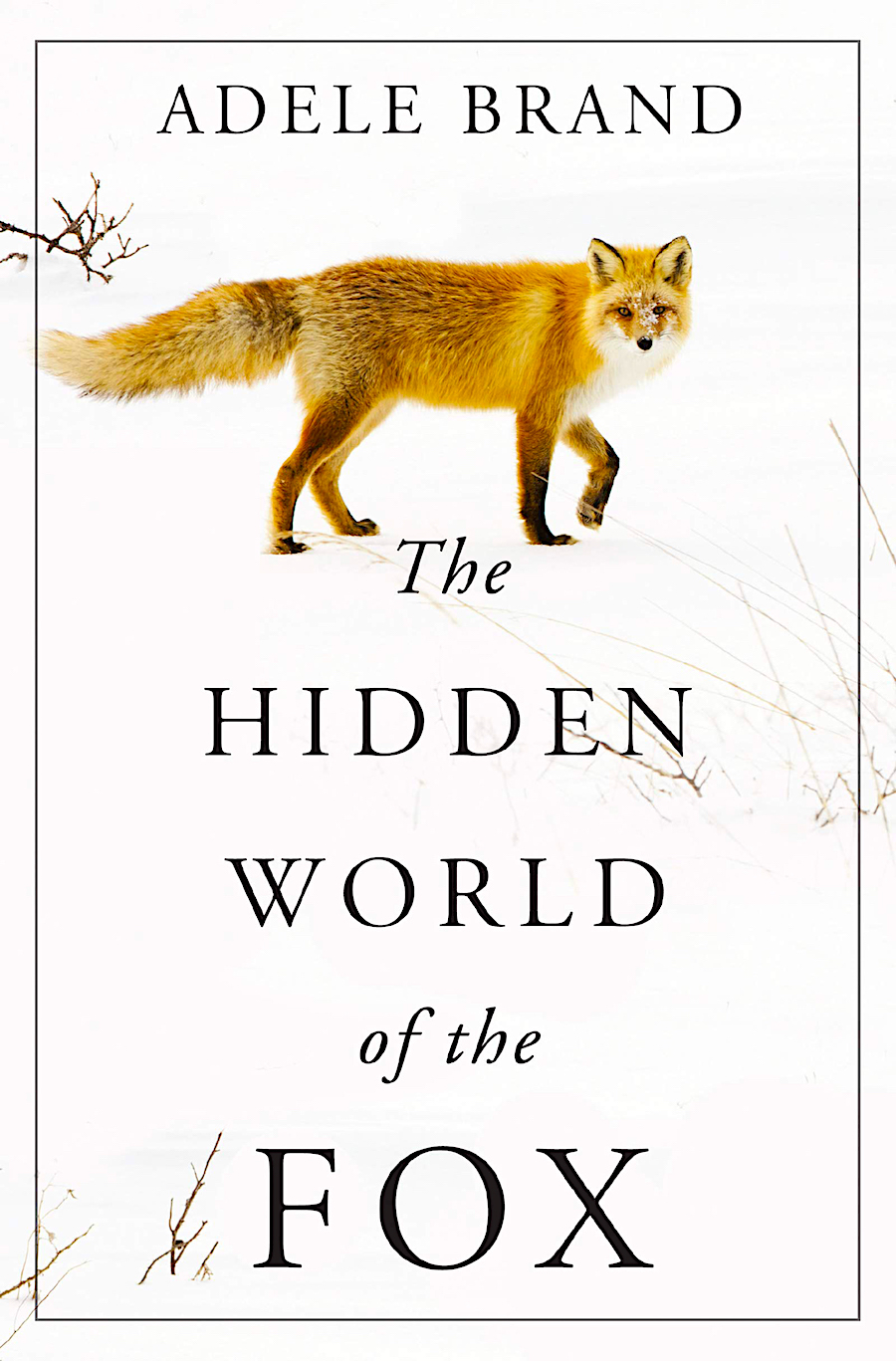I enjoyed watching an adorable mother fox and kits last summer in my South Wellfleet neighborhood. I considered myself privileged to witness their antics and also to catch glimpses of male foxes while I’ve been out and about on long walks. Here on the Cape, I wasn’t thinking of the ways foxes frequently inspire anger and even anxiety in other parts of the world, or of the storied, if contested, history of hunting foxes that the English have.

But in The Hidden World of the Fox, British ecologist Adele Brand’s fascinating exploration of all things vulpine (one of my favorite new words), human fear of foxes is front and center. “A wild animal attack is uniquely traumatic and echoes in our subconscious long after it has slipped from the press,” Brand writes. “Our challenge as a species is to respond to that reality in a humane and proportionate fashion.”
Brand’s book, recently published by William Morrow, instructs readers in humane and proportionate ways to interact with foxes, but I found its teachings relevant to coexistence with all nonhuman predators. For those of us on the Outer Cape, Brand’s insights may be particularly helpful as we consider sharks.
Brand has been filming, observing, and rescuing foxes around the globe for more than two decades. She keeps a blog and has her own YouTube channel, where she chronicles her adventures in the natural world. Her prose magnifies the beauty of that world, making her tutelage an absolute pleasure to read.
Brand’s passion for foxes rests in part on their ability to eat most anything and live most anywhere, accounting for their long-term survival. Of particular interest to her are “overlap zones,” where foxes and humans share a habitat. That Brand is based in Surrey makes her observations especially applicable to Independent readers. Surrey is home to an Area of Outstanding Natural Beauty, the British equivalent to a U.S. national park, and like the Outer Cape, Surrey has areas of protected acreage where wildlife flourishes. Surrey also abuts a dense metropolitan area (London) where wild animals adapt to human impositions such as speeding cars, fenced yards, golf courses, garbage cans, rail lines, and the like. Wilderness, Brand explains, is irrelevant to foxes, because they are “living on land that is controlled by humanity.” The same, of course, can be said of great whites feeding along the Atlantic shore.
Brand’s purpose is to educate rather than to scold. She believes that “abrasive name-calling” alienates and is therefore ineffective. She works to explain fox evolution, physiology, reproduction, feeding, and social behavior in short, interesting chapters. (Who knew that a band of foxes is called a “skulk”?) Brand includes information on the history of human perceptions of foxes as well, exploring how they are represented in fables and myths, literature, visual art, and even pop music.
My favorite chapter in The Hidden World of the Fox focuses on the science of population evaluation. Brand details the ways researchers conduct stratified sampling, perform transects, and consider scat, footprints, and individual sightings. With an estimate of the number of breeding adults, ecologists are able to calculate an “effective population.” Lest anyone conclude that these figures are speculative, Brand stands by their scientific accuracy. “Current populations, whether they are human or wild animal,” Brand writes, “are not a matter of opinion: they are absolute facts that can be studied to a reasonable degree of accuracy using well-respected techniques.” Brand’s convictions lead her to pillory the tabloid press, which sows fear by sensationalizing anecdotes. “Should I trust newspaper claims about urban fox numbers?” she asks. Her complete answer: “No.”
Brand argues for “an ethic of respect and coexistence” toward foxes, suggesting ways to watch and study them so we will be less likely to jump to wrongheaded conclusions. She offers practical tips on the use of cameras to capture images of foxes during the day and night. She explains how to make plaster casts of fox footprints. And she suggests guidelines on keeping a wildlife diary and conducting other science projects. In addition, she weighs in on keeping foxes as pets (don’t do it) and feeding them (not so clear cut).
A final word on Brand’s writing. I have never before encountered the verb “to concrete,” but Brand deploys it with verve. She suggests, for example, that humans have “concreted” fox habitats. She brilliantly evokes the energy and manic movement of fox kits: “In my experience,” she writes, “the average cub has the energy of ten dog puppies. These youngsters tear around in circles like orange whirlwinds. They leap, climb, scrap, bury, undo shoelaces and get themselves into all kinds of mischief. It’s no wonder that vixens benefit from the ‘auntie’ support of subordinates.” The descriptions of one female fox named Imelda (think: shoe fetish) reduced me to giggles. Over and over, I found myself savoring Brand’s word portraits of locales as disparate as the Yare Valley in Norfolk and remote regions of North America.
Brand concludes the book by reminding readers to keep the threat foxes pose to humans in perspective. Humans inflict far more damage on foxes than foxes inflict on humans. Much as people weigh in on the management of sharks along the Atlantic, some in Britain have called for annihilation of the fox species. Poisonings, though illegal, occur as humans imagine themselves and their children frequent prey of these adaptable hunters, who prefer mice and voles but who will gladly dine on anything from carrion to fast food. Hunters delude themselves, Brand explains, by thinking that their so-called sport will control fox populations. They don’t target adults of breeding age and status, and they can’t assess such data as they aim their guns.
It is a human “whimsey,” Brand concludes, “that we love wild animals that collapse towards extinction in our presence, and resent those that survive us.” True of foxes. True of sharks. All will appreciate this contradiction even more acutely by spending time in the company of this engaging book.



